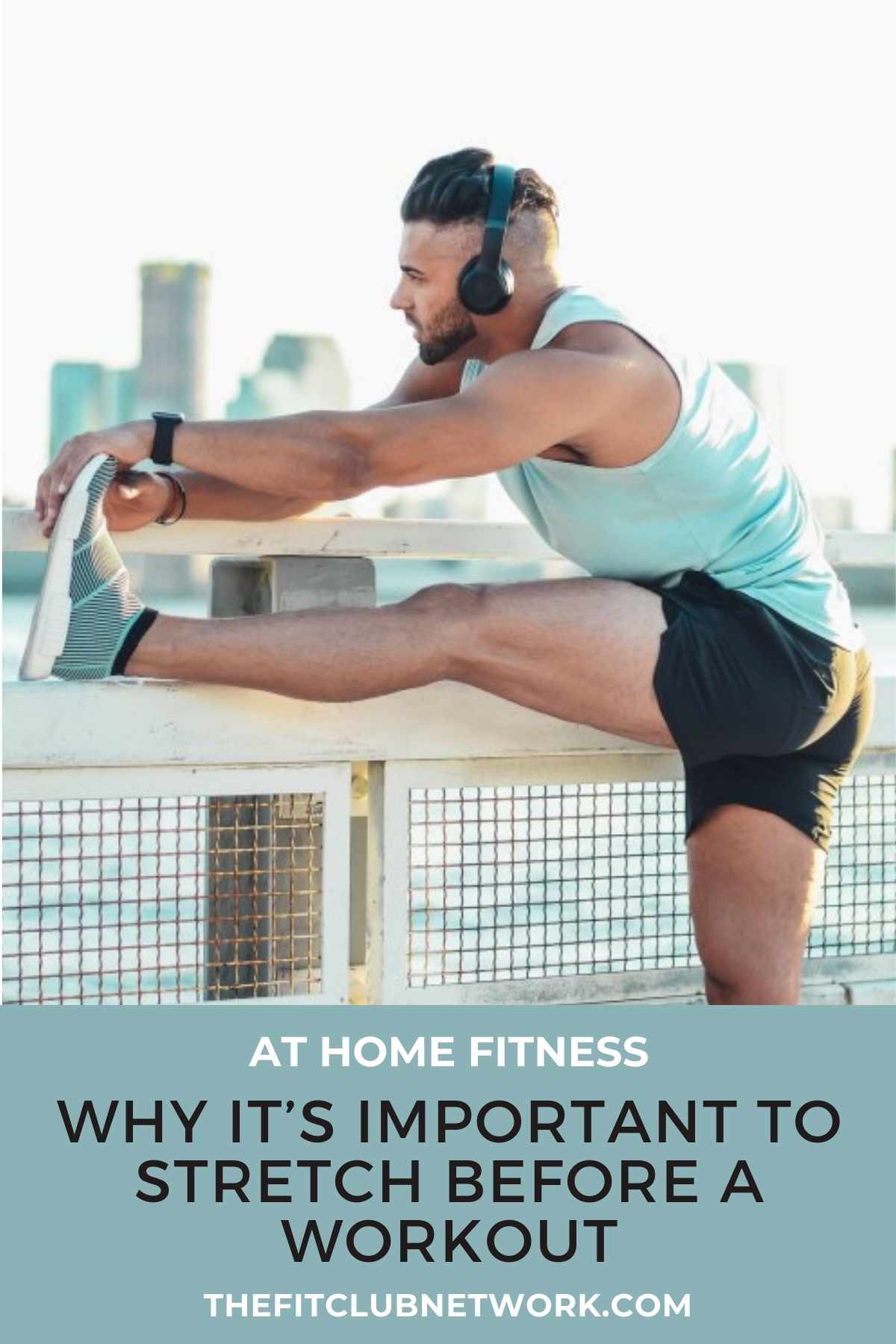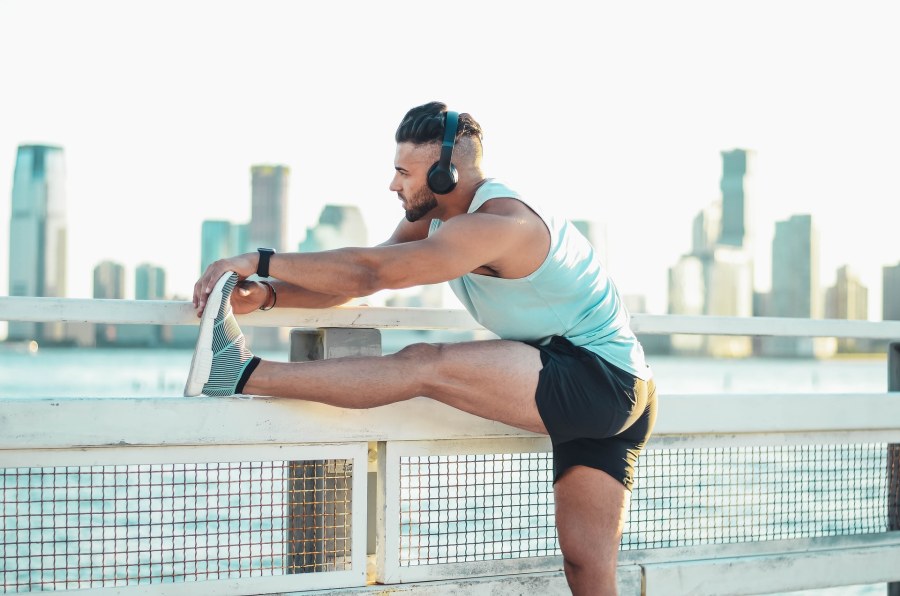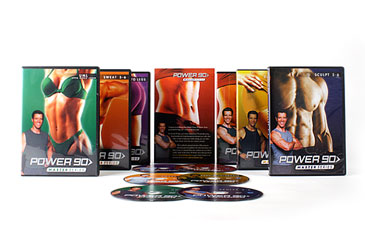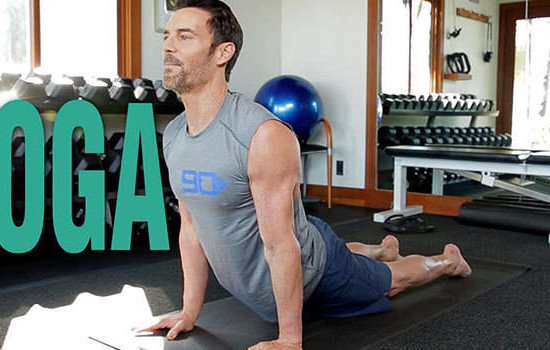

Image by Michael DeMoya
Why It’s Important to Stretch Before a Workout
Today I’d like to address why it’s important to stretch before a workout. Stretching is something that’s easy to skip, but the benefits of stretching are numerous.
From increased flexibility to improved performance and decreased tension, stretching is GREAT for your body!
Let’s take a look at the many benefits of stretching before your workout.
Different Kinds of Stretching
There are a few types of stretches, so let’s talk about those first. These include:
- Static stretching
- Dynamic stretching
- Ballistic stretching
Static stretching is getting to a position and holding it for at least 20 seconds. Have you ever pulled your heel to your butt and then held it there to stretch your quad? That’s a static stretch.
Dynamic stretching is part of an active warm-up and includes movements like trunk rotations and bodyweight lunges. These are low-impact, low-effort exercises that stretch your body and prepare you for a workout.
Ballistic stretching is something most people should avoid because it can lead to injuries. Ballistic stretching includes aggressive bouncing and end-range motions. This type of stretching is for experienced professional athletes.
Stretching Before a Workout
It’s important not to confuse stretching with warming up, though dynamic stretching IS part of a good warmup. You should always do a brief warm-up before you do any stretching or working out.
Stretching COLD muscles can lead to a muscle pull or injury. Always warm up first with low-impact, low-effort exercises, such as jogging in place, arm circles, and trunk rotations.
What benefits will you get from static and dynamic stretching? Let’s go over them…
8 Benefits of Stretching Before a Workout
I can’t encourage you enough to always warm-up and do some dynamic stretching before you work out. Here are some of the benefits:
1) Increased Flexibility
Everyone’s range of motion is different, and that’s okay, but you need a minimum range of unrestricted motion for good joint and body health. Good flexibility is especially important for healthy knees and hips.
The more you include stretching in your daily routine, the better range of motion and flexibility you’ll enjoy. Many older folks have reduced mobility— something you can avoid or at least delay with good flexibility and range of motion.
2) Stretching Can Reduce Your Risk of Injury
Since dynamic stretching is part of a good warmup and warming up reduces your risk of injury, pre-workout stretching also decreases your chance of an injury.
Dynamic stretching not only warms up your muscles, but also your joints and tendons. It also increases your range of motion, which helps you perform your workout in the right position.
Think about squats. It’s hard attaining the full squat position if you haven’t taken the time to warm up first.
When you fail to warm up, you may compensate for the shorter range of motion by leaning forward, which stresses your back and knees.
RELATED | Avoiding Injury During Exercise
3) Improved Performance
Dynamic stretches are good preparation for physical activities and exercise. If your muscles are tight, that limits your range of motion and your performance may suffer.
4) Reduce Post-Workout Tightness
Dynamic stretching helps prepare you for exercise, but post-workout static stretching is a great remedy for tightness. Don’t skip the cool down exercises and stretching after your workout.
Static stretching involves going to the full range of motion and holding the stretch for at least 30 seconds. Static stretches are great for cooling down after a workout.
5) Increased Blood Flow to Your Muscles
A regular stretching routine improves blood circulation. This can help in muscle recovery and reduce muscle soreness and also results in better circulation throughout the day.
6) Improved Posture
Stretching helps reduce muscle imbalances that can cause poor posture. Stretching and strengthening encourage proper alignment of your muscles while reducing muscle imbalances. This helps improve your posture.
7) Decrease Tension
We can all use a little stress relief and stretching does just that! Most people tense their muscles when they’re stressed. Dynamic stretching before a workout, in combination with static stretching after a workout, is a great stress reliever.
With less stress in your muscles, you’re also less likely to suffer from tension headaches.
8) Reduce Aches
For many of us, our workday is full of sitting, especially now that many people are working from home and doing lots of videoconferencing. Constant sitting shortens some muscles, like the hip flexors, making them feel tight and achy.
A regular stretching routine helps reverse this muscle shortening, alleviating aches and pains. If possible, try doing a quick, five-minute dynamic stretching routine every hour.
5 Dynamic Pre-Workout Stretching Exercises
Now that you know how important pre- and post-workout stretching is, let’s look at a few stretching exercises.
It’s great when you can do sport-specific dynamic stretching and warm-ups, but there are also a few exercises everyone can and should do. Perform each of these exercises for one minute.
➡️ Trunk Rotations
While standing straight (don’t arch your back) with your feet about hip-width apart and your knees slightly bent, raise your arms out to your sides. Now, bend your arms at the elbows with your hands facing out in front of you.
While keeping your knees bent, rotate your torso to the right while pivoting your left heel so your toes face to the right. Turn back to the front and then do the same motion to the opposite side.
➡️ Glute Stretches
While seated in a chair, put your left ankle onto your right thigh right above your knee. Place your hand on your left shins. With a straight spine, lean forward until you feel a stretch.
When you’ve stretched as far forward as you comfortably can, hold the stretch for about 30 seconds. Return to starting position, change legs, and repeat the exercise.
➡️ Hamstring Stretch
While sitting in a chair, stretch one leg outward and away from the chair while keeping the other leg bent. Reach gently toward your toes. Once you’ve reached as far as possible, hold for 10 to 30 seconds.
Repeat the stretch with the other leg.
➡️ Lunges
Stand up straight with your hands on your hips and legs hip-width apart. Keep your shoulders back and your chest up with your back flat and core braced.
Take a big step forward with your left foot and lower your body until your rear knee is bent 90 degrees and your front thigh is parallel to the ground. The back knee should only be a couple of inches off the ground.
RELATED | Physical Benefits of Yoga
Pause for a moment and return to the starting position by reversing the movement. Repeat the process but this time start with your right foot. Continue alternating lunges for one minute.
➡️ Leg Swings
Stand tall with your arms out to the sides and your feet together. You can hold your arms up and out to the sides or grip a stable surface for balance if necessary.
Place all your weight on the left leg while raising your right leg out to the side. Swing the right leg down and in front of the left leg while keeping your body upright.
Keep swinging your leg up to the right and down in front of your left leg for 30 seconds. Switch sides and do another 30 seconds.
Now You Know What to Do Before a Workout!
Now you know why it’s important to stretch before a workout! Dynamic stretching is an important part of warming up. Stretch both before and after a workout to reap all the benefits of stretching.
From increased flexibility to reduced muscle tension, a consistent stretching routine is a win for your routine!
Find some great warm-up routines and stretching exercises on Beachbody On Demand!
Any questions? Are you ready to stretch? Get in touch if I can help in any way!




